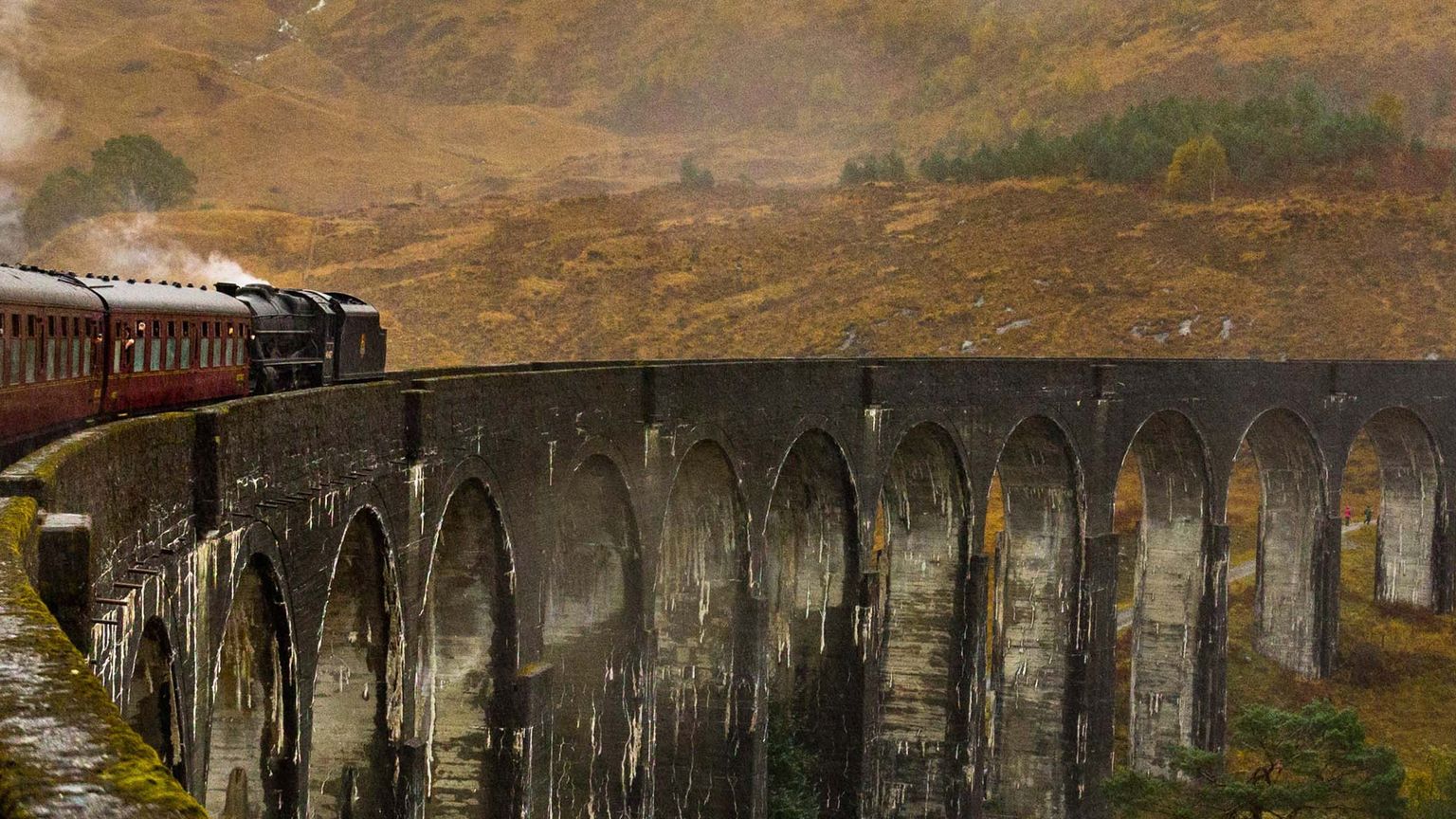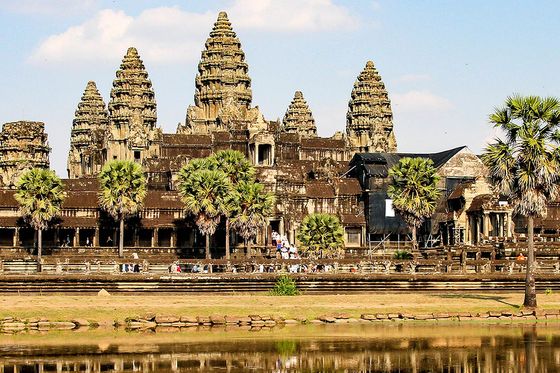)
10 fun facts about Seoul’s Gyeongbokgung Palace and how to visit on tour
Seoul is a booming city that delicately balances ancient and modern life—grand palaces brush up against futuristic landmarks, and intricate Buddhist temples sit alongside towering skyscrapers. The frenetic energy of South Korea’s capital of 10 million shifts entirely as you step into peaceful enclaves, like its ancient palaces, where history has been preserved and time seems to stand still. Out of Seoul’s five grand palaces, the 7,700-room Gyeongbokgung is considered the most beautiful—and most symbolic of the country and Korean royal family.
To fully appreciate the majesty of this 14th-century stunner that was once the main royal palace of the Joseon dynasty, you need to stare up at it in person. When you join us on our new Highlights of South Korea: Seoul, Busan & Gwangju tour, you’ll step back in time watching the Changing of the Guard Ceremony, complete with recreated costumes and weapons that nod back to the time of the first king. But before you jet off to South Korea, here are a few fun facts to know about Seoul’s signature palace.

1. Gyeongbokgung was the largest palace of the Joseon dynasty
Constructed in 1395, Gyeongbokgung was designed to be the primary palace of the Joseon dynasty (quick history lesson: Yi Seong-gye, or Taejo as he was later known, was the founder and first king of the new regime after overthrowing the Goryeo dynasty). Dubbed the Northern Palace since it’s in the mountainous northern stretch of Seoul, this is the largest of the country’s five and the spot where many of the kings were crowned.

2. The name means “Palace Greatly Blessed by Heaven”
You’re sure to leave Seoul with a few new Korean phrases under your belt, but even if you can’t remember every word or place you’ve seen, one term that’s easy to remember is palace, or gung (pronounced “goong”). Gyeongbokgung might seem complicated, but the name breaks down to “Palace Greatly Blessed by Heaven” since it was built three years after the Joseon Dynasty was founded and was symbolic of the regime’s future prosperity.

3. Bugaksan Mountain was once the heart of ancient Seoul (Hanyang)
The Baekdu-Daegan mountain ridge cuts through the country from Jirisan in the south up to the North Korean border, and Seoul counts seven mountains alone. Towering behind the palace, the ridges of Bugaksan Mountain were once home to Hanyangdoseong, the city wall that encased Hanyang, the historic capital city. You can still see preserved parts of the Seoul City Wall today on trails around Downtown Seoul.

4. The Hunminjeongeum (Hangul) script was created and distributed here
Up until the 15th century, Chinese characters, which were difficult for Koreans to learn, were used to write Korean. This all changed during the reign of the fourth king, Sejong the Great, who created a 28-letter alphabet called Hunminjeongeum. Today, the official script is called Hangul (a combination of “the Korean people” or “great” and “letters”) and features just 24 letters. A copy of the original edition, from about 550 years ago, was discovered in an old house at the palace. As an ode to the book, the converted solar date when it was published on October 9 is now a national holiday dubbed Hangul Day.

5. The Gyeonghoeru Pavilion once held royal banquets and religious rituals
Rebuilt as a wooden, two-story structure with 48 stone columns and no walls on the lower level, Gyeonghoeru shows off sweeping views of the palace and Inwangsan Mountain from the top, making it a favorite for the king to throw banquets for foreign envoys. As the legend of “skirt rock” goes, the king would look across at his ex-wife’s home at the foot of the mountain. To catch his attention, she spread out the pink skirt she once wore at the palace on a rock on Inwangsan to comfort King Jungjong.
“You think you know about Japan and Korea, but what you don’t know will pleasantly surprise you,” said 17th-time traveler Mary said after our 15-day South Korea & Japan: Seoul to Tokyo tour, which visits Korean palace Gyeongbokgung on a sightseeing tour of Seoul. “The fast-paced cities to their deep religious connections, this tour will introduce you to two countries that will want to know you right back.”

6. It was burnt to the ground during the Japanese invasion
After nearly 300 years of expansion, the Japanese burned the symbolic palace during the 1592 invasion—when King Seonjo was in the 25th year of his reign. This wouldn’t be the first or only time the Seoul palace buildings were damaged—it happened again during the Japanese occupation after the 1910 Japan-Korea Treaty, when more than 90 percent of Gyeongbokgung’s buildings (apart from the main ones) were demolished.

7. The palace was left in ruins for more than 270 years after the war
After Gyeongbokgung was destroyed during the Imjin War, Changdeokgung Palace was rebuilt and emerged as the main royal residence. It took more than two centuries before Gyeongbokgung was revived, but it would never look the same as it originally did.

8. The new complex was the size of a small city—and comparable to China’s Forbidden City
Sprawling across more than 4.4 million square feet, when the Korean palace was rebuilt in the 19th century, Gyeongbokgung featured more than 500 buildings that combined ancient Chinese architecture with Joseon dynasty tradition—all in a labyrinthine style. Offices for the king and state officials, plus royal residences, were placed within the palace walls, and Gyeongbokgung quickly came to represent the national sovereignty. “Enjoyed this trip—loved learning about South Korean culture and history,” said an 11th-time traveler of ours after their South Korea & Japan: Seoul to Tokyo tour.

9. After the assassination of Empress Myeongseong, the imperial family never returned
The assassination of Queen Min, the first official wife of Gojong, Korea’s first emperor, by Japanese agents marked the finale of the Joseon dynasty’s reign at Gyeongbokgung Palace. This was a bloody beginning to the end of the imperial family, and the palace—particularly Heungnyemun Gate, Gungcheonggung Palace and Gwanghwamun Gate—wasn’t restored until the 1990s.

10. The palace is a work in progress—like Gaudí’s Sagrada Família
Each time you visit Seoul, you’ll see a new layer of landmark Gyeongbokgung unfold as the restoration project continues. The project has another 20 years to go (only about 36 buildings were in their original form), but there’s plenty to see now that nearly 90 buildings have been reconstructed. For the ultimate photo op, don a traditional Korean costume, or hanbok (available for rent at the palace), and stroll through Gyeongbokgung the same way the royals once did.
Ready to discover the majestic beauty and rich history of Gyeongbokgung Palace with us? Reserve your spot on a guided group tour and immerse yourself in Korea’s royal heritage.


)
































































































